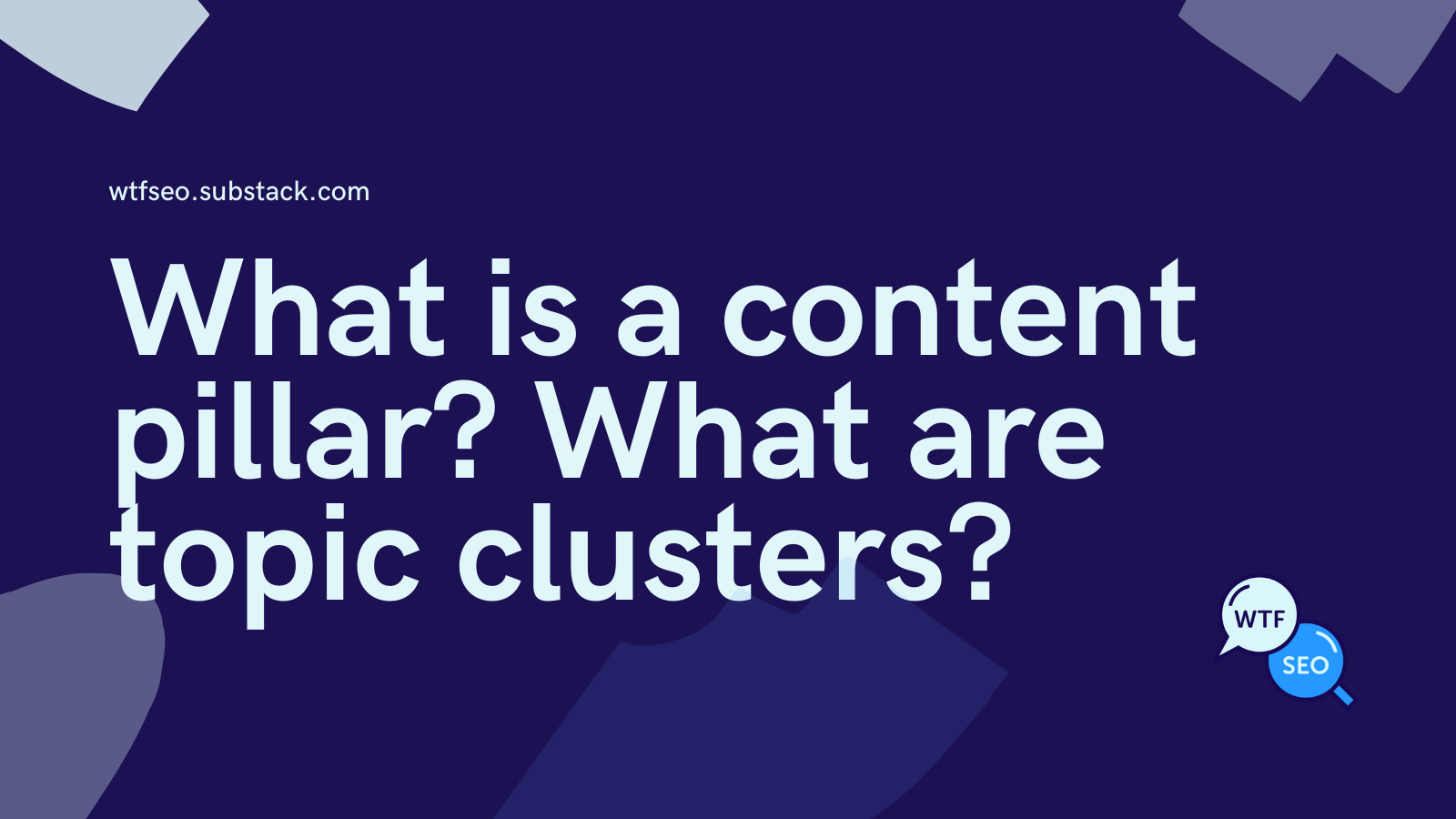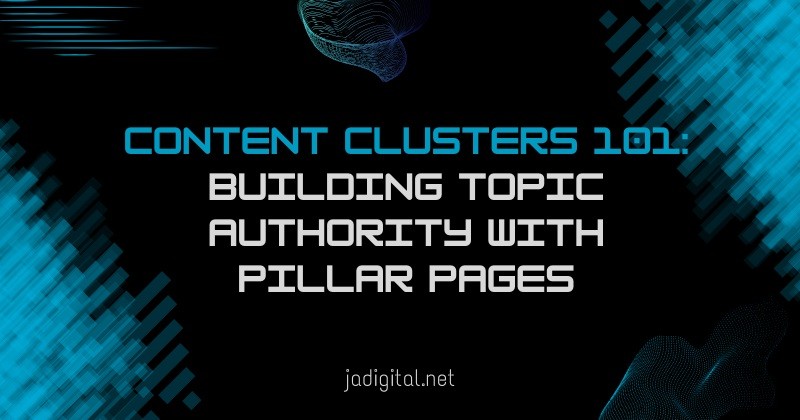Content clusters are vital for SEO success. They help build topic authority.
Understanding content clusters and pillar pages can boost your website’s visibility. These strategies organize content around a central topic, creating a robust structure. Readers and search engines prefer this clear, logical approach. With a strong pillar page, related articles link back to it.
This creates a network of information. In this blog post, you will learn how to build effective content clusters. We will explore the benefits of pillar pages and how they enhance your site’s authority. By the end, you will know how to organize your content for better search engine rankings. Let’s dive into the world of content clusters and pillar pages.
Quick Navigation
Introduction To Content Clusters
If you’ve ever wondered how some websites consistently rank higher on search engines, the secret often lies in their content strategy. One powerful approach is the use of content clusters. They can transform your website into an authority on specific topics, driving more traffic and engagement. Let’s dive into what content clusters are and why they matter for your website.
What Are Content Clusters?
Content clusters are a group of related content pieces centered around one main topic, known as a pillar page. Think of it as a hub-and-spoke model. The pillar page acts as the hub, and the related content pieces are the spokes.
Each spoke covers subtopics linked to the main topic, providing in-depth information. These subtopics are connected back to the pillar page through hyperlinks. This structure helps search engines understand the relationship between the content pieces, boosting your SEO.
Importance Of Topic Authority
Why is topic authority essential for your website? It helps you stand out in a sea of information. When search engines recognize you as an authority on a subject, they are more likely to rank your content higher.
Imagine you run a fitness blog. If you have a well-structured content cluster around “weight loss,” covering everything from diet plans to workout routines, search engines will see you as a go-to source for weight loss information. This builds trust with your audience as they find comprehensive, reliable content in one place.
Building topic authority isn’t just about ranking higher. It’s about providing value to your readers. When they find your content helpful and informative, they’re more likely to return and recommend your site to others. This boosts your online presence and credibility.
Have you ever visited a website and found it difficult to navigate through the information? Content clusters solve this problem by organizing content in a user-friendly way. This improves user experience, making it easier for readers to find what they need.
So, are you ready to transform your website into a topic authority powerhouse? Start by creating your first pillar page and build out your content clusters. Watch as your website climbs the search engine ranks and becomes a trusted resource in your industry.

Credit: www.seoforjournalism.com
Creating Pillar Pages
Crafting pillar pages helps organize content into clusters, enhancing topic authority. These pages act as comprehensive resources on a subject.
Creating pillar pages is essential for building strong topic authority. These pages act as the cornerstone of your content cluster strategy. They provide comprehensive coverage of a broad topic and link to related subtopics. Let’s dive into the process of creating effective pillar pages. ###Defining Pillar Content
Pillar content serves as the foundation for your content clusters. It’s a detailed, comprehensive resource on a specific topic. Think of it as the ultimate guide that addresses the main points and questions related to the subject. Consider a fitness blog. A pillar page could be “The Ultimate Guide to Strength Training.” It would cover everything from the basics of strength training, benefits, types of exercises, and common mistakes. ###Steps To Build A Pillar Page
1. Choose Your Core Topic Start with a broad topic that is relevant to your audience. Make sure it aligns with your website’s goals and objectives. 2. Research Keywords Identify keywords that people are searching for related to your core topic. Tools like Google Keyword Planner or Ahrefs can help. 3. Outline Your Content Create an outline that includes all the subtopics you want to cover. This helps structure your pillar page logically. 4. Write Comprehensive Content Develop detailed sections for each subtopic. Use clear headings and subheadings to organize your content. Make sure it’s easy to read and understand. 5. Add Internal Links Link to related blog posts or articles within your site. This helps improve SEO and keeps readers engaged. 6. Use Visuals Incorporate images, videos, and infographics to make your content more engaging. Visuals can help explain complex concepts more clearly. 7. Optimize for SEO Ensure your pillar page is optimized for search engines. Use relevant keywords in your headings, meta descriptions, and throughout the content. 8. Update Regularly Keep your pillar page up-to-date with the latest information. Regular updates ensure your content remains relevant and authoritative. Creating a pillar page takes time and effort, but the payoff in terms of SEO and user engagement is significant. Have you started creating your pillar pages yet? What topics are you focusing on?Supporting Content Strategy
Building a strong content strategy involves more than just creating random blog posts. It requires a structured approach to establish topic authority. One effective way to achieve this is through content clusters. Content clusters consist of a pillar page and supporting content. This strategy can significantly enhance your site’s SEO and user experience.
Pillar pages serve as the main hub for a particular topic. They cover the topic broadly and link to more specific articles. These specific articles are the supporting content. They provide detailed information and insights, complementing the pillar page. The synergy between pillar pages and supporting content creates a comprehensive knowledge base.
Role Of Cluster Content
Cluster content plays a vital role in a content strategy. It helps to break down complex topics into manageable pieces. Each piece focuses on a specific aspect of the main topic. This makes it easier for readers to find the information they need. Cluster content also improves SEO by targeting long-tail keywords. These keywords can attract more niche audiences.
Quality cluster content builds trust and authority. Readers are more likely to return to your site for reliable information. Each supporting article should be well-researched and informative. This enhances the credibility of the pillar page. Together, they form a strong foundation for your content strategy.
Interlinking Best Practices
Interlinking is crucial for effective content clusters. It involves linking the pillar page to supporting articles and vice versa. This creates a network of related content. Proper interlinking helps search engines understand the structure of your site. It also improves user navigation.
Use descriptive anchor text for links. It should be relevant to the linked content. Avoid using generic phrases like “click here.” Instead, use keywords related to the topic. Ensure that each link adds value to the reader. This enhances the user experience and boosts SEO.
Regularly update your links to keep them relevant. Check for broken links and fix them promptly. This maintains the integrity of your content cluster. An effective interlinking strategy strengthens the overall content strategy. It contributes to better search engine rankings and user engagement.

Credit: backlinko.com
Measuring Success
Measuring the success of your content clusters is crucial. You need to know if your strategy is working. This helps you make adjustments and improve your results. Focusing on the right metrics is essential. Let’s dive into the key performance indicators and tools for tracking progress.
Key Performance Indicators
Track these key performance indicators (KPIs) to measure your content cluster’s success:
- Organic Traffic: Monitor the number of visitors from search engines. This shows if your content ranks well.
- Engagement: Check metrics like time on page, bounce rate, and pages per session. Higher engagement means your content is valuable.
- Conversion Rate: Measure the percentage of visitors who complete a desired action. This could be filling out a form or making a purchase.
- Backlinks: Track the number of quality backlinks to your pillar pages. More backlinks indicate authority and trust.
- Keyword Rankings: Monitor your keyword positions in search results. Higher rankings lead to more visibility and traffic.
Tools For Tracking Progress
Several tools can help you track and measure your KPIs. Here are some of the most effective ones:
- Google Analytics: This tool provides insights into traffic, user behavior, and conversions. It’s free and easy to use.
- Google Search Console: Use this tool to monitor your search performance. It shows keyword rankings, click-through rates, and indexing issues.
- Ahrefs: This paid tool helps you track backlinks, keyword rankings, and competitor analysis. It’s comprehensive and powerful.
- SEMrush: Another paid tool that offers keyword tracking, site audits, and competitive research. It helps you optimize your content strategy.
- BuzzSumo: This tool analyzes content performance and engagement. It shows which content resonates with your audience.

Credit: tabithawhiting.com
Frequently Asked Questions
What Are Topic Clusters And Pillar Pages?
Topic clusters group related content around a central theme. Pillar pages act as comprehensive guides, linking to detailed cluster content.
What Are Pillar Pages In Content Marketing?
Pillar pages in content marketing are comprehensive guides covering broad topics. They link to detailed blog posts, boosting SEO.
What Is The Difference Between Content Pillars And Content Clusters?
Content pillars are broad themes around which content is created. Content clusters are groups of interlinked articles related to a specific topic.
How Many Pillar Pages Should You Have?
You should have 3-5 pillar pages to effectively cover your core topics and improve SEO.
Conclusion
Building topic authority requires effort and strategy. Content clusters help organize your content. Pillar pages serve as the foundation. They link to related articles. This structure improves SEO. It also enhances user experience. Readers find information easily. Search engines rank your site higher.
Start creating content clusters now. Watch your topic authority grow. Keep your audience engaged. Boost your online presence.
